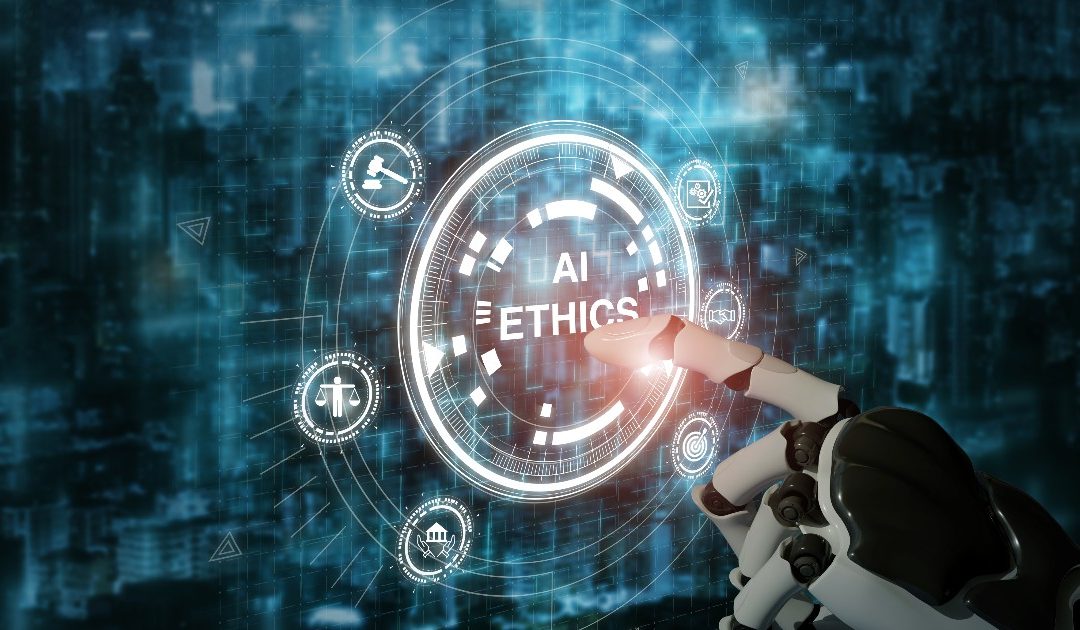Despite our lack of constant awareness, artificial intelligence has permeated various aspects of our lives. Familiar instances include customized recommendations in online shopping, interactive chatbots powered by conversational AI, and many more. In the domain of data security, AI-driven spam filters have long been instrumental in shielding us from harmful emails.
These are all firmly established applications. Nonetheless, with the recent surge of generative AI, machines are now capable of much more. From identifying threats to automating incident responses to evaluating employee awareness using simulated phishing emails, the potential for AI in cybersecurity is undeniable.
Yet, as with any new opportunity, new risks emerge. Threat actors are leveraging AI to execute increasingly convincing phishing attacks on a scale previously unattainable. To outpace these threats, defenders must also leverage AI, ensuring its transparent application focuses on ethics to avoid treading into gray-hat practices.
The time is now for information security leaders to embrace conscientious AI strategies.
Striking a Balance between Confidentiality and Security in AI-enhanced Security Measures
Criminal activities are human issues, and cybercrime is no exception. Technologies like generative AI serve as additional tools in the arsenal of attackers. Legitimate enterprises train their AI models with massive volumes of web-scraped data, often based on the creative works of numerous individuals. There is also the risk of unintentionally gathering personal information present in the public domain. Consequently, major AI model developers are now facing legal repercussions, while the field itself confronts enhanced scrutiny from regulatory bodies.
Although threat actors pay little heed to AI ethics, reputable companies can inadvertently fall into the same trap. For example, web-scraping tools might be employed to harvest data to formulate a model for identifying phishing content. Nevertheless, these tools may fail to discern between personal and anonymized data, particularly with visual content. Open-source datasets like LAION for images or The Pile for text encounter similar issues. In a 2022 incident, an artist from California discovered her private medical images taken by a doctor had been incorporated into the LAION-5B dataset used to train the widely-used open-source image synthesizer Stable Diffusion.
The haphazard development of AI models specialized in cybersecurity can potentially pose greater risks than abstaining from AI altogether. To prevent such instances, developers of security solutions should adhere to the highest standards of data integrity and confidentiality, especially concerning anonymization and protection of sensitive information. Legislations such as Europe’s General Data Protection Regulation (GDPR) and the California Consumer Privacy Act (CCPA), formulated predating the rise of generative AI, offer invaluable insights for structuring ethical AI strategies.
Discover AI cybersecurity solutions
A Focus on Privacy
Companies have been utilizing machine learning to identify security threats before the emergence of generative AI. Systems integrating natural language processing, behavioral analysis, sentiment analytics, and deep learning have all proven effective in such scenarios. Nevertheless, they introduce ethical dilemmas where privacy and security may clash.
Consider a situation where a company employs AI to monitor employees’ browsing activities to spot internal threats. While this enhances security, it may involve capturing personal browsing details – such as medical inquiries or financial transactions – that employees anticipate to remain confidential.
Privacy is also a critical issue in physical security. For example, AI-driven fingerprint recognition can prevent unauthorized access to critical locations or gadgets, but entails the collection of sensitive biometric data that, if exposed, could result in enduring repercussions for the individuals involved. Hence, ensuring biometric systems are well-secured and backed by responsible data retention policies is paramount.
Incorporating Human Oversight for Decision-making Accountability
An essential aspect to bear in mind about AI is its susceptibility to errors akin to human fallibility. A fundamental component of implementing an ethical AI strategy involves testing, evaluation, validation, and verification, especially in pivotal areas like cybersecurity.
Many risks tied to AI manifest during the development phase. For instance, rigorous TEVV is necessary for assuring the quality of training data and confirming its authenticity. This is crucial due to data poisoning emerging as a primary attack vector employed by sophisticated cybercriminals.
Bias and fairness represent another challenge inherent to both AI and human nature. For instance, an AI tool utilized to flag malicious emails might mistakenly target legitimate emails based on dialects linked to specific cultural groups, resulting in biased profiling and targeting of particular demographics, prompting concerns about unfair treatment.
The objective of AI is to complement human intelligence, not replace it. Machines cannot be held liable for errors. It’s important to remember that AI acts based on human instruction. Consequently, AI assumes human biases and flawed decision-making processes. The opaque nature of numerous AI models makes identifying the underlying issues challenging, as users lack insight into the rationale behind AI-driven decisions. Models lacking transparency hinder the attainment of transparency and accountability in AI-powered decision-making.
Prioritizing Human Interests in AI Advancements
Throughout the AI development process, particularly in cybersecurity or any other sector, human involvement is crucial. Continuous evaluation and refinement of training data by diverse, inclusive teams are imperative to minimize biases and misinformation. Even though humans are susceptible to the same issues, active supervision and the capacity to clarify the rationale behind AI conclusions can significantly mitigate these risks.
Viewing AI simply as a shortcut or substitute for human input often leads to AI evolving independently, being trained solely on its outputs to a degree where it amplifies its own shortcomings – known as AI drift.
The role of humans in safeguarding AI and assuming responsibility for its implementation and utilization is paramount. Rather than leveraging AI solely as a means to cut costs and reduce headcounts, enterprises should reinvest resultant savings into retraining and transitioning their teams toward new roles closely tied to AI. Hence, every information security professional must prioritize ethical AI usage (thus, considering the human element) above all else.

